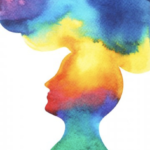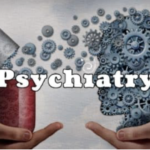“I’m about to lose my son”.
Adam’s mother brought him to me as a last resort. They’d tried more psychiatrists than she could count, with the outcome always the same: he felt “drugged and ignored”. A new drug, a new diagnosis, and eventually, deeper despair. The treatment he received just added shame and isolation to his burdens. Doctors (and patients, too) continue to seek a pill - a quick fix - to solve deep wounds. When will we wake up to the fact that medication can lessen - but never cure - our problems? I'm going to tell you about a real breakthrough, but one that I'm afraid will be diminished by its misuse.
Adam* is a 33 year old decorated police officer. Sitting next to his mother - head down, shoulders hunched and barely able to speak - he was the embodiment of a once-strong man felled by the weight of depression. Chronically suicidal, no longer able to work or care for himself, he could barely even articulate what was going on inside his mind. His only few hours of sleep came after drinking half a bottle of vodka.
“My father believed in the belt,” Adam said with little emotion. “He had more interest in his buddies and the bottle than me or family”. He answered my questions flatly. Yes he was bullied as a kid. Yes he was small for his age and felt unprotected. He remembered few details.
What I saw in Adam made my blood boil. How many clinicians and professionals had spoken with him and ignored his clear signs of dissociation? Had any sought out a connection with him? Had any sought to get to the “Why”? All of us, especially children, learn to dissociate. We cut ourselves off from ourselves to avoid feeling the pain. And as we shut down our emotions, we also shut down our ability to remember. We’re left with an inexplicable sadness and emotional flatness that grows into depression.
This was the position Adam was in when I met him. Starting at age eight, he now had 25 years of unsuccessful treatment and with that, 25 years of worsening depression. I realized that he would be suspicious and even mistrustful of me, and began to address that immediately. I also knew we needed something to break through the walls of dissociation he’d built over the years. I introduced him to the possibility of Ketamine Assisted Psychotherapy.
Ketamine has a long history going back at least 50 years and was brought to prominence in the Vietnam war as a battlefield anesthetic. Serendipitously, as is the case with many medical discoveries, it was found that ketamine could induce something of a psychedelic state at a lower dose. In addition, in a landmark study by Dr. John Krystal, (the son of one of my original psychoanalytic mentors, noted pioneer in trauma therapy, Dr. Henry Krystal), it was discovered that ketamine had some significant anti-depressive properties.
While clinical use of ketamine has become more main stream today, the majority of ketamine use seems to ignore its true power. It’s often treated as a stand-alone agent, similar to the way psychiatrists have used other medications. Let’s write a prescription, cross our fingers and move on. We can’t simply medicate the patient and wait for its effects. We both - doctor and patient - have to dig in and do the work of uncovering the underlying instigators of the illness. I am now convinced that ketamine has important effects on the brain, and, if combined with psychotherapy in the hands of an experienced and skilled practitioner, must be integrated into an overall treatment plan and not simply treated as a “one and done phenomenon“.
After over 30 years of practice as a neuropsychiatrist and a psychoanalyst, I have seen that broken or damaged attachments and connections early in life exist in all mental conditions. In fact, I am beginning to believe that ALL mental health issues originate in disturbed relationships, connections, attachments, and the imprint they leave psychologically and neurologically on a young developing brain. Personalities and character become adaptations to these early experiences.
With Adam, and indeed with most patients I see, safety and trust must first be established, particularly if we are to embark on a treatment as new as Ketamine. The patient must feel actively listened to, heard, and understood. Just as I have written about a bi-directional highway between brain and body, there must be an ongoing bi-directional highway between patient and therapist. This connection must be fluid, dynamic and involves trust in taking this journey together. A patient must feel like a WE exists. Without this, he/she will feel just like Adam- alone, stigmatized, and labeled. Yes, this requires a significant amount of preparation both from myself and my nurse practitioner before ketamine is introduced, but the benefits far outweigh the effort.
Setting the stage, the patient has a strong and trusted connection to the therapist. The nurse practitioner stays in the room and administers intravenous ketamine but remains there as a protector if things feel overwhelming, a medical provider, and a scribe to record everything that happens in the ketamine experience. The patient is instructed to come up with an intention before the IV is started. We ask: “What is the one thing you want to learn inside yourself in this experience?“ This essentially primes the unconscious to begin to work on the question.
The patient undergoes an experience in which visual images are seen, memories are recovered, emotions are experienced, most often with reference to the intention. Everything that is said and felt gets recorded. They allow themselves a day of calm contemplation following the session. The next day, I meet with the patient to integrate everything they have experienced. Invariably patients find that they are able to understand new parts of themselves, including their earlier traumas. And as they now to remember or re-experience these traumas, they do so without the terror of the original trauma. Importantly, this removes the need to dissociate from it. This allows us to reconstruct the “why“ or causation of current pain and adaptations to their pain in ways that begin to lift the fog of shame and the shroud of darkness that produces the depression.
So, what was Adam’s experience? After six ketamine treatments and therapy sessions, Adam’s own words tell the story: “I feel alive! I’ve never felt like this in my life before”. His life was beginning to make sense. The catalyst of his paralyzing depression was losing its power. Adam was taking back control. During his infusions, he was able to open doors to childhood experiences he’d repressed, and to experience them anew without repercussions. He clearly saw the humiliation and shaming that happened early in his life, which had led to escalating fear and panic later on. These events created a near panic feeling for him in social settings, and led to many “decisions” throughout his life, including quitting the baseball team and withdrawing from police force activities. Throughout his life, the discomfort and the resulting “decisions” were being propelled by hidden trauma. Ketamine opened the door, but it was our therapy sessions that turned a light on in those dark rooms, and allowed him to take control of what had been unconscious but highly active motivators. Today, Adam feels capable, safe and empowered. No longer a scared boy in a man’s body, he’s able to work through his feelings in therapy and on his own and rejoin his life. If he gets stuck again along the way, he knows we’re here for him.
As a psychoanalyst, Freud was prescient about the existence of an unconscious mind. Since then, we have been struggling mightily to find different ways to make the unconscious conscious, and to begin to take some control over our unconscious which, modern science tells us, mostly controls our behavior, emotions, thoughts and judgments. I truly believe that ketamine assisted psychotherapy allows us a tool to drastically accelerate this process. This is the beginnings of my hypothesis of how ketamine assisted psychotherapy is helping my patients in a profound way and I can say with certainty, when used responsibly, ketamine offers new hope where none has existed before. We’re now able to see results in a few months that required years of therapy before. This process takes commitment, perseverance, and dedication, but it is truly life-changing.
Beware of the “magic pill” - these results come from intense connection and brave work, not caused but simply facilitated by this amazing drug.
If you have questions about Ketamine, our Nurse Practitioner Kim Erison is available to talk with you. Please call 248-593-8540. As always, we're here for you.
SIDEBAR: The Science Behind Ketamine.
It is known that ketamine produces a functional and electro physiologic dissociation or disconnect between parts of the brain called the Thalamus, Limbic System, and Frontal Cortex. The thalamus is what receives sensory signals from all five of our senses that connect us with the external environment, as well as the signals from our own body. The limbic system is the brain’s emotional center or roughly where our unconscious mind and emotions exist. The frontal cortex is involved in cognitive processing of information. This is where our consciousness is thought to reside with our decision making and so-called executive functions.
Ketamine blocks all incoming sensory modalities both from the outside world and from one’s own body. This is an inhibitory effect on a neural circuit. Yet, ketamine also can have stimulating functions as well. It is known to activate the interactions between the limbic system and the frontal cortex causing the frontal cortex to have a hyper metabolic pattern. This is what causes the psychedelic experience and also the feeling of dissolution. Now, the patient is in a state of a type of “waking dream“ in which his/her perceptions and emotions are all being fed from his/her unconscious brain, cut off from external reality.
In addition, ketamine modulates dopamine, serotonin, opiate and estrogen receptors in our brain. This can result in a state of contentment, if not bliss at lower doses. This is where the misunderstanding about ketamine’s benefit is coming from: those who give ketamine (or nasal ketamine, Esketamine or low dose lozenges) and claim to reduce depression without grounding it in psychotherapy are literally, in my opinion, simply making the patient feel high for a few hours. This isn’t leading to a cure or even a long term mediation of the depression. It’s simply a very short-lived mental vacation.
* As always, the name and specific details have been changed to protect the privacy of the patient.








